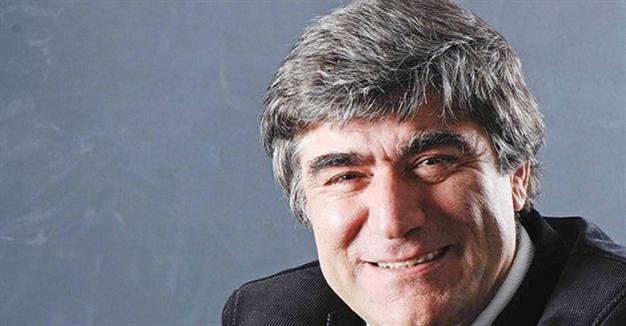Intel reports ‘screamed’ warning of Dink murder, says judge
ISTANBUL – Anadolu Agency

If the intelligence reports provided as evidence in the trial into the murder of Turkish-Armenian journalist Hrant Dink were read in order, it would become crystal clear that Dink’s life was in grave danger, the chief judge hearing the case has told a local intelligence bureau chief accused of negligence.
“The files include many incidents before and after the murder of Dink. It is evident that Dink’s life was in serious danger in those periods, in that atmosphere,” the judge at a heavy penal court in Istanbul told Ercan Demir on Aug. 8. Demir was the deputy manager of the bureau of intelligence in the Black Sea province of Trabzon, where Dink’s murderer originated from.
“These same files were brought to you while you were on duty in Trabzon. If you follow the chronological order, these files are screaming, they say, ‘This man [Dink] will die,’” he said, adding that “if you read it like a novel, you will understand from the first 50 pages – before you come to the end - that Hrant Dink will be killed.”
The judge went on to ask Demir his personal opinion about who was responsible for the slain journalist’s murder, but the former intelligence officer denied responsibility and claimed the trial had become a place to “settle accounts” inside the police department.
“In my opinion, this issue has four dimensions in the police department. The first and second are the Trabzon police department under police chief Engin Dinç and Faruk Sarı. The third is the department of intelligence and the fourth lies in the Istanbul police department,” Demir said, claiming the current process was a reflection of a fight within the police department.
“I apologize to the joint attorneys but no one is looking for a murderer,” he said, claiming evidence was manipulated and documents were forged to prevent resolving the assassination.
The chief judge, on the other hand, said he believed the assassination had three parts: Those who pulled the trigger, who were already tried, those within the police department, who were currently being tried, and those in the gendarmerie, who were awaiting trial.
Meanwhile, former Gendarmerie Sgt. Emre Cingöz was arrested by the Istanbul court on Aug. 9 for crimes including attempting to overthrow the constitutional order, membership to the Fethullahist Terror Organization/Parallel State Structure (FETÖ/PDY) and participation in voluntary manslaughter.
Four other suspects, gendarmerie sergeants Mustafa Küçük and Mikdat Özbek and former specialized sergeants Rahmi Özer and Musa Yıldırım, were released with a judicial control decision as well as a ban on leaving the country.
Dink, 52, was shot dead with two bullets to the head in broad daylight outside the offices of Agos in central Istanbul on Jan. 19, 2007.
Ogün Samast, then a 17-year-old jobless high-school dropout, confessed to the murder and was sentenced to almost 23 years in jail in 2011.
But the case grew into a wider scandal after it emerged that security forces had been aware of a plot to kill Dink but failed to act.
Relatives and followers of the case have long claimed government officials, police, military personnel and members of Turkey’s National Intelligence Agency (MİT) played a role in Dink’s murder by neglecting their duty to protect the journalist.
Turkey’s top court in July 2014 ruled that the investigation into the killing had been flawed, paving the way for the trial of the police officials.
All the names of the suspects implicated in the investigation were reported to have been on duty in police departments in Istanbul, Ankara and Trabzon at the time of Dink’s murder.
 If the intelligence reports provided as evidence in the trial into the murder of Turkish-Armenian journalist Hrant Dink were read in order, it would become crystal clear that Dink’s life was in grave danger, the chief judge hearing the case has told a local intelligence bureau chief accused of negligence.
If the intelligence reports provided as evidence in the trial into the murder of Turkish-Armenian journalist Hrant Dink were read in order, it would become crystal clear that Dink’s life was in grave danger, the chief judge hearing the case has told a local intelligence bureau chief accused of negligence.